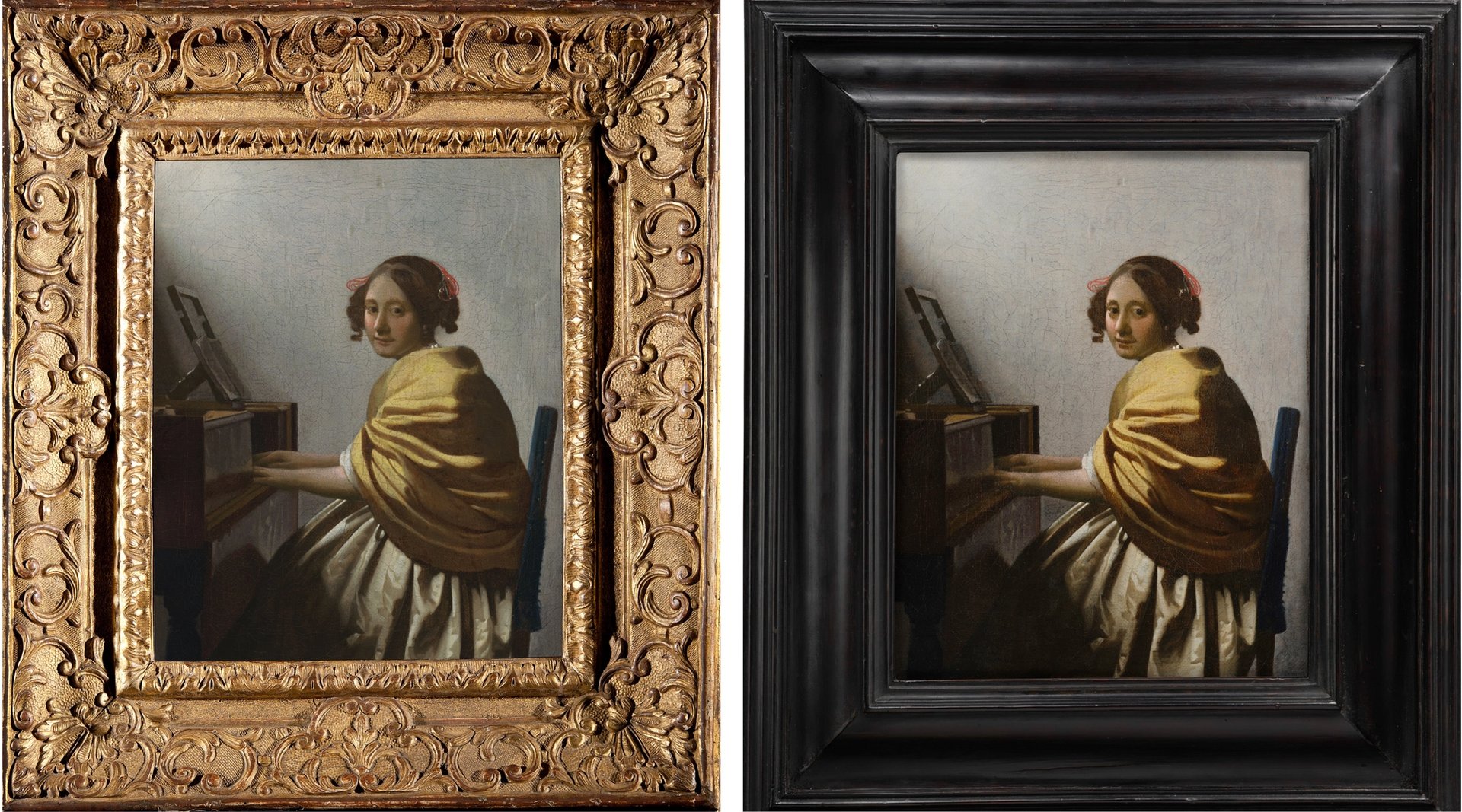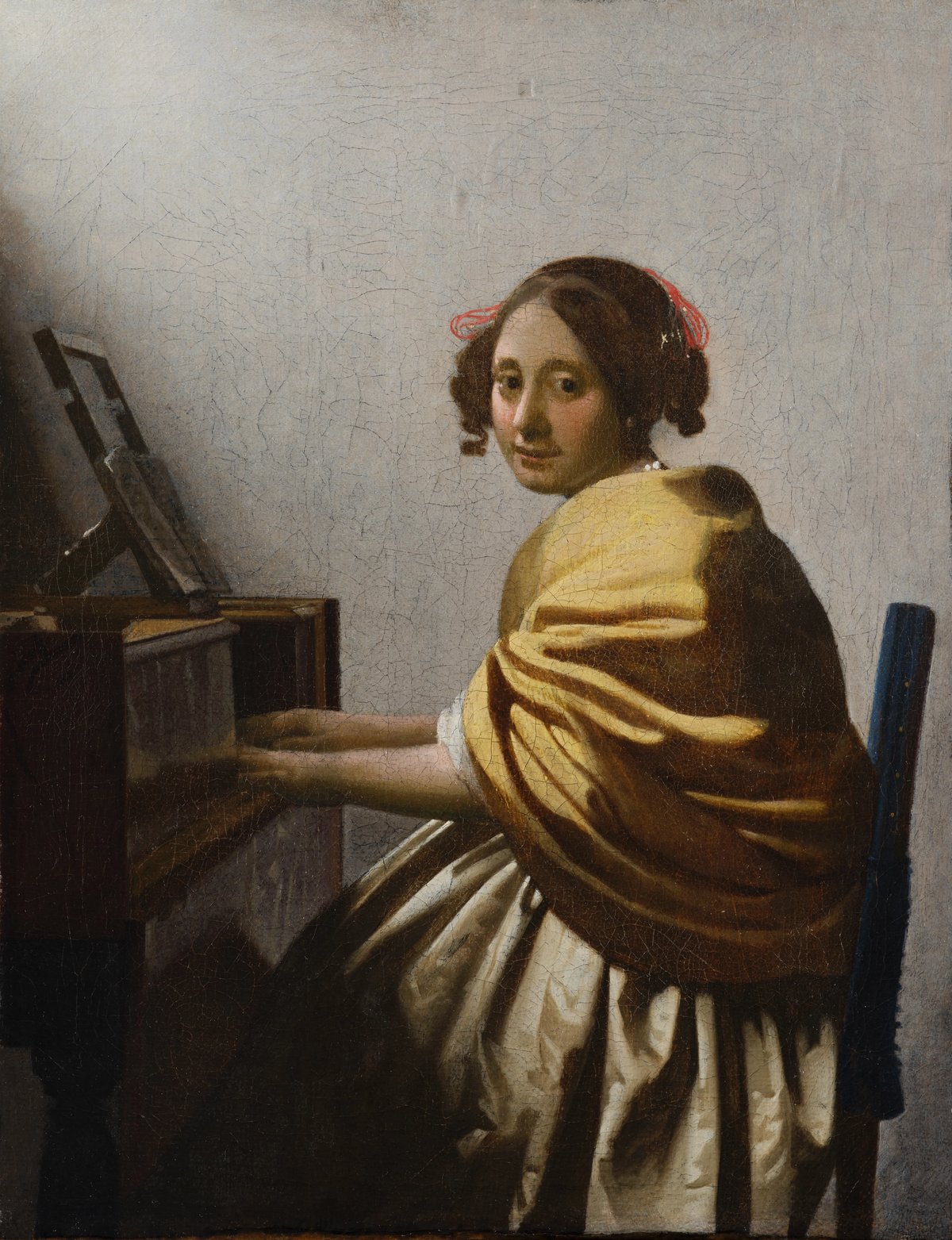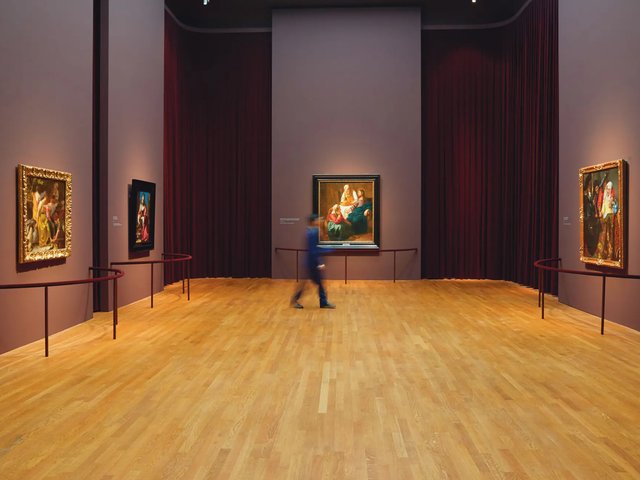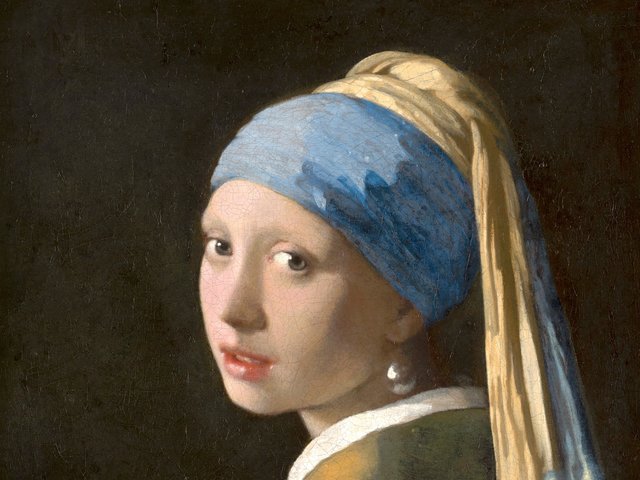Evidence of 17th-century air pollution has helped date a rare Vermeer painting. Conservation of Young Woman seated at a Virginal has revealed the presence of feldspar particles between layers of paint. These deposits probably came from the production of Delftware ceramics in the artist’s home town.
The newly conserved Young Woman seated at a Virginal has just gone on display in an exhibition of the collection of the American entrepreneur Thomas Kaplan. From Rembrandt to Vermeer: Masterpieces from The Leiden Collection runs until 24 August at Amsterdam’s H’ART Museum (Kaplan named it the Leiden Collection after Rembrandt’s birthplace). The Amsterdam show comprises 75 works, including no fewer than 18 Rembrandts, and the Vermeer provides the climax in the final room.
Young Woman seated at a Virginal is the only one of the 37 authentic Vermeers which remains in private hands. Since the 1940s its attribution had been widely doubted, but the painting was thoroughly examined just before its auction at Sotheby’s in 2004 and since then it has won almost universal acceptance among Dutch 17th-century curators.
Kaplan revealed to The Art Newspaper that he had placed the first bid at the 2004 auction, but the price soared and at £16m it went to the Las Vegas casino boss Steve Wynn. On the day of the auction, Kaplan told a dealer friend: “One day I will own that painting.” When Wynn needed to sell the Vermeer four years later, Kaplan and his wife Daphne Recanati were able to acquire it (along with Rembrandt’s Self-portrait with shaded Eyes, 1634).
Last year they had the Vermeer examined and cleaned by the conservator David Bull (who died on 28 December 2024). Kaplan had called for a sensitive treatment: “I want to see [the work of] the artist, not the restorer,” he says.
The presence of feldspar particles has helped explain the sequence of how Vermeer completed the picture. He finished the basic composition in around 1670-72, presumably leaving it stored in his studio in the centre of Delft. It was then that feldspar particles in the air fell onto the picture’s surface.
Arthur Wheelock, a former curator at Washington DC’s National Gallery of Art and now Kaplan’s senior collection adviser, believes that it was in 1675 that Vermeer added the yellow shawl over what had been a bodice. Stylistically, the modelling of the shawl appears to have been done in a similar way to that in A Young Woman seated at the Virginal in London’s National Gallery, which Wheelock dates to Vermeer’s last years.
Wheelock suggests that the alteration was made because of a change in female fashion: “The shawl may reflect a different style of dress that became fashionable after the French invasion of the Netherlands [in 1672], but it also gave the young woman a timeless, classical look”.
An intriguing question is whether Vermeer added the shawl on his own initiative or following a request from a buyer. The identify of the original owner remains unknown, although it could well have been his fellow Delft citizens Pieter van Ruijven and his wife Maria de Knuijt, who were the artist’s major patrons.
Until recently the Kaplan painting had been considered to have been completed between 1670-72, dates given in the Rijksmuseum’s highly successful retrospective in 2023. That dating has now been revised, with Wheelock stating it as 1670-75. Vermeer died on 15 December 1675 and Young Woman seated at a Virginal is most likely his final picture.
Following Bull’s conservation treatment there have been subtle changes to the painting. As Kaplan puts it, “the nuances, the shadow, the tonal composition all just came out, I was amazed, we simply took away what was not Vermeer.” The modelling of the folds in the white satin dress are now more apparent. Removal of later overpaint on the woman’s lips and eyebrows gives her a friendlier expression.

Vermeer's Young Woman seated at a Virginal in its old gilt frame (left) and new one Courtesy of the Leiden Collection
Young Woman seated at a Virginal has also been reframed for the current Amsterdam exhibition, with the show later travelling to the Norton Museum of Art in West Palm Beach, Florida (25 October-29 March 2026).
Since the Sotheby’s auction the Vermeer had been in an ornate French carved and gilt frame. It is now in a black ebony Dutch frame of the late 17th century. This improves the appearance of the painting, since the simpler frame is less distracting and puts greater emphasis on Vermeer’s composition.
One mystery remains: who is the woman in the Kaplan painting? Was she a family member, a friend or a model? Whoever she was, she seems to have been someone whom Vermeer knew well and who would relax in his company. In the painting, she plays confidently, not needing to face the virginal. She turns her face towards the viewer, playing for us.




